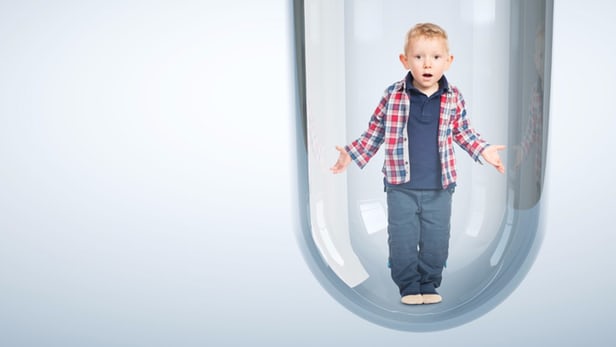
Japanese scientists have successfully grown healthy eggs from mouse skin cells – all within the perimeters of a lab dish. Led by Professor Katsuhiko Hayashi of Kyushu University, this achievement marks the first time the entire process has taken place outside a mouse and raises a tantalizing question for the reproductive science community: What if you could do the same with human cells?
Recreating the circle of life
This breakthrough study comes after more than ten years of research for lead researcher Hayashi and his colleague, Professor Mitinori Saitou of Kyoto University, who have been studying the gamete (sperm and egg) production process in mammals and recreating it in vitro. In 2012, they had a breakthrough when they developed fertile egg cells from both embryonic and induced pluripotent stem cells (iPS), adult cells that have been 'reprogrammed' to become stem cells. However there was one catch: the egg cells were unable to mature fully in the lab dish. Hence, the researchers had to transplant them into a living mouse so nature could take over and complete the process.
In this new study, the team worked with two kinds of stem cells: embryonic ones, and skin cells from a mouse tail that were reprogrammed into iPS using in-vitro fertilization (IVF) techniques.
Before these stem cells can become eggs, they first need to develop into primordial germ cells (PGCs), the precursors of sperm and egg. To encourage this transition, the researchers placed them in a chemical cocktail of proteins called growth factors and other compounds to encourage their transition into PGCs. And while the researchers did not have to place these cells in living mice, they still had to create an artificial ovary-like environment using cells taken from the ovaries of mouse fetuses so that the eggs could fully mature.
According to the report, each artificial ovary produced more than 50 mature eggs. However they also exhibited a higher level of abnormalities, mutations and irregularities in the chromosomes and genes, and of the 316 two-cell embryos that developed, only 11 (3.5 percent) grew into full-term pups. In comparison, the success rate of eggs taken from adult mice and fertilized in vitro is around 62 percent. Researchers are still unclear why the lab-grown eggs are of such low quality.
The healthy eggs were fertilized in vitro using normal mouse sperm and transplanted into the uterus of female mice.
Despite the low quality of many of the eggs, there are two things to take away from this study, say the authors: the first is that that the successful production of pups is proof that the culture system "fulfills the condition of producing functional eggs." Secondly, none of the pups died prematurely. The study also reports that the mice from these tests have since gone on to produce their own offspring.
For Hayashi and his team, this breakthrough makes it easier for them to study the egg development process, though he adds they have no plans to produce human eggs. There are a few reasons for this.
First, human signaling networks are far more complex than those found in mice. Indeed, they're so different that it would require Hayashi and his team to start the whole research process from scratch. Secondly, finding a constant and ready supply of human embryos is a challenge. That said, they are working to apply their new technique to monkey embryos, a project that, if successful, might see them replicating the mice results in monkeys in the next five to 10 years. And who knows what might happen after that? If all goes well then, scientists might just be able to produce human PGCs within a few years.
Asking what if…?
While this breakthrough is not likely to produce an infertility cure any time soon, it opens up new avenues of research for advancing regenerative and human reproductive research. For a start, if scientists could develop human eggs from stem cells artificially, it could very well benefit scores of people, from infertile couples and women who can no longer conceive due to their age or ovarian damage from medical treatments, to same-sex couples. And there's no reason to think that this couldn't be applied to bringing extinct animals back to life either.
Stem cell researcher Dr. Jacob Hanna of the Weizmann Institute of Science, who led a research team that successfully created human PGCs from skin cells last year, believes "the unlimited ability to make eggs" could radically change the face of infertility in as little as five years. "I am not in favor of creating engineered humans, and the social and ethical implications . . . need to be thought through, but I am very confident it will work and will be very relevant to anyone who has lost their fertility through disease," he told The Sunday Times during an interview regarding his research.
But in order for this to happen, should governments start reviewing the implications of such a technology and their policies regarding human stem cell and embryonic research? At least one person thinks so.
Says Cambridge University professor Azim Surani, who was also involved in the research leading to the birth of Louise Brown, the world's first test-tube baby: "This is the right time to involve the wider public in these discussions, long before and in case the procedure becomes feasible in humans."

 Previous page
Previous page Back to top
Back to top







